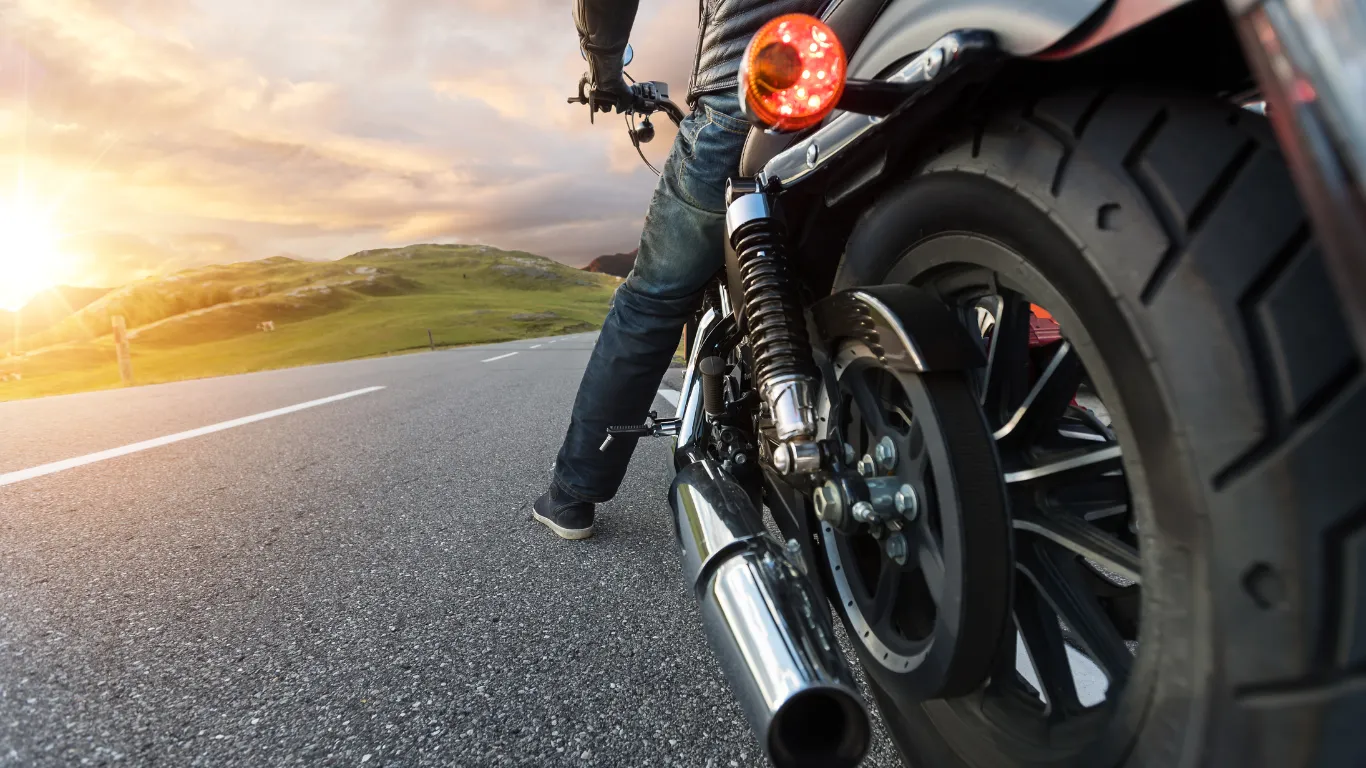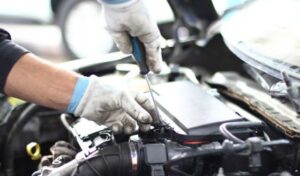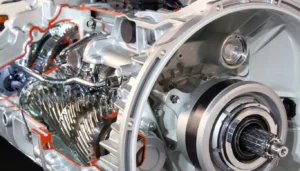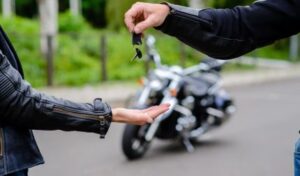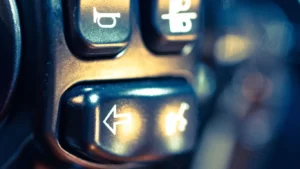Have you ever found yourself in the middle of a journey and cursed the fact that your motorcycle wouldn’t start? The most likely reason for such terrible things to happen is that the engine broke down, but there are other possibilities as well.
After doing some research, I came up with a solution to the issue, which was that I ought to have been aware of this earlier in the conversation.
You have a riding partner in me, so I can help you with any feasible solution to the problem of fixing the motorcycle engine, and I’m going to give you some tips that will help you avoid damaging the engine in the first place.
What Is A Motorcycle Engine?
The majority of a motorcycle’s power comes from its engine, which is referred to as a motorcycle engine.
Although two-stroke or four-stroke internal combustion engines are the most common types of motorcycle engines, other types, such as wankels and electric motors, are also occasionally used.
Although some mopeds, such as the VéloSoleX, use friction drive to the front tyre, the engine on a motorcycle typically drives the rear wheel, with power transferred to the driven wheel via a belt, chain, or shaft.
The front tyre of some mopeds, such as the VéloSoleX, had friction drive.
Between the years 1921 and 1925, approximately 2,000 units of the Megala were manufactured with front-wheel drive.
On the other hand, production of the modern Rocon, which is a two-wheel-drive all-terrain motorcycle, has been ongoing since the 1960s.
The gearboxes of most engines have anywhere from six to seven different gear ratios.
Heavy tourers like the Honda GL 1600 and sidecar motorcycles like the Ural are two examples of the types of motorcycles that can have a reverse gear.
On the vast majority of motorcycles, the rider shifts gears using foot pedals and a manual clutch; however, earlier models featured hand levers for this function.
Some models have been updated recently with automatic or semi-automatic transmissions, and others have been updated with CVT transmissions.
Two-stroke And Four-stroke
Two-stroke engines have fewer moving parts than four-stroke engines and produce twice the power per revolution.
A four-stroke engine has better fuel economy due to more complete combustion of the intake charge in a four-stroke engine.
But because they are bad for the environment, most two-stroke engines have been taken out of motorcycles in developed countries.
Since there is essentially no lubrication in the cylinders, there will always be smoke coming out of the exhaust, especially at wide throttle openings.
There are still a lot of two-stroke motorcycles on the market today.
The majority of them are low-power off-road motocross mopeds, tiny scooters, and step-through underbones.
They compete fiercely with four-strokes, like the 50cc Honda Super Cub, which was the best-selling motorcycle at the time.
Common Causes Of Engine Failure:
You’ve probably seen it happen many times when riding a motorcycle: the bike will suddenly stop in its tracks, refuse to start, and require new pistons to be installed in the engine.
Actually, some of your errors are to blame for this. If you ride a bike, this must have happened to you at some point or another as well.
This occurs as a result of careless bike maintenance.
I am going to explain why the motorcycle engine seizes below.
Servicing:
Some people don’t get their bikes serviced when they should, and when this happens, the engine of the bike begins to have problems.
Because the servicing hasn’t been done in a long time, it begins to malfunction, and eventually, the engine of your bike becomes seized.
Engine Oil:
The bike’s engine seized because the engine oil was not topped off in time.
The engine oil in the bike keeps the engine lubricated, which reduces friction and keeps the engine from getting too hot.
It spoils frequently, and when it does, it needs to be replaced.
However, some people choose not to, which causes the engine to overheat, cause its pistons to melt, and induce the engine to seize.
You should always remember not to use the engine carelessly in such circumstances.
Considering that you must ride the bike at pickup speed for several hundred kilometers and that it costs $300 to $4000, You won’t be able to run it at the desired speed until after that.
Important Tips To Keep The Engine In Good Condition:
You should take care of a few things if you own a motorcycle and want your engine to run at peak efficiency for many years.
If you follow a few vehicle tips, the motor on your motorcycle will keep running well for a long time.
However, if you disregard them, your motorcycle’s engine is more likely to suffer damage quickly.
Here, we’re going to give you some tips that you can use to prolong the life of your engine.
Use Right Tire Size
On your motorcycle, you should never use wide tires.
Because of the pressure that these wheels put on the engine, the engine will overheat, and its lifespan will be shortened.
You should make use of the company-fitted tires rather than going with wider wheels.
They are light, and as a result, they do not place as much strain on the engine.
Avoid Overloading
When riding a motorcycle, you should never have more passengers than necessary.
This has an immediate impact on the engine, and it will also have a negative impact on its lifespan.
Never carry more than one person on a motorcycle, as this places additional strain on the vehicle, and carrying heavy weight causes the engine to start working more quickly, which increases the risk of the vehicle seizing up.
Do Not Use The Clutch Unnecessarily
When you press the clutch of your motorcycle, whether it be to change gears or for any other reason, the clutch plates of your engine are put to work.
In this kind of situation, it is strongly suggested that you don’t use the clutch unless you really have to.
When appropriate, use the clutch.
Because of this, the machine’s clutch plate will have a longer life, which is important because the clutch plate is an essential component of your motor; if it functions properly, the engine will have a longer life overall.
Use Good Engine Oil
Always make sure to use high-quality engine oil in your vehicle.
When you take your motorcycle in for maintenance, you should make sure that the oil that is put in it comes from a reputable brand and provides a high level of performance.
If you have a mechanic recommend that you get fuel from a local company, you should take their advice seriously and select the appropriate engine oil according to the make and model of your vehicle.
Do Not Ride Rough
Your motorcycle’s engine will suffer wear and tear if you ride it over rough terrain.
When you are driving over rough terrain and suddenly apply the brakes, accelerate quickly, or only use the accelerator when the clutch pedal is depressed, these driving manipulations all have an impact on your motor.
During this time, there are a lot of different things that can mess up the engine. Because of this, you should steer clear of riding in an aggressive manner.
Ride in The Right Gear
While you are out on the bike, make sure that you are keeping in mind that you are moving at the appropriate speed for the gear that you are using. It is critical that you keep this in mind at all times.
In the event that this does not occur, the motor of your motorcycle will be affected, and it goes without saying that this will have a negative effect, causing damage to the engine.
How to Fix a Motorcycle Engine ?
Rebuilding the engine on a motorcycle can have a wide range of costs, from as little as $500 to over $8,000 for the job to be done by a professional mechanic. The average cost of the job is around $600.
The type of rebuild being done, the parts that are needed, the manufacturer and model of the motorcycle, and the business doing the rebuild are the main things that affect the cost.
Secure The Bike
A lot of torque is needed to take apart or reassemble parts of a motorcycle that are bolted together with bolts and nuts.
Because of this, it is very important to make sure the motorcycle is safe before trying to remove these parts.
To prevent the motorcycle from moving forward while the mechanic is working on it on a lift, the front wheel of the motorcycle must be clamped in place with a wheel clamp, and ratchet clamps must be used to secure the motorcycle.
Drain Fluid
Using containers that are appropriate for the job, you can drain the fluids from the engine, the gearbox, and the radiator.
The vehicle’s engine should be shut off for the night in order to remove as much fluid as is safely possible.
It is best to remove bolts and nuts the night before, as they frequently become seized.
But when you leave a machine to drain, you are responsible for making sure the workshop is safe.
You must do this so that there is no open flame heater and the catch container is big enough.
Disconnect the Battery
The best and most effective way to solve this problem is to disconnect the battery because it makes things safer.
When removing a battery or turning it off, it is very important to disconnect the ground lead first.
When reinstalling a battery, however, it is just as important to connect the hot lead first.
Remove Fuel Tank
Taking out the fuel tank is typically the most efficient way to gain access to an engine.
A fuel stabiliser should be added to the fuel if there is a possibility that the motorcycle will not be driven for an extended period of time (for example, during the winter for maintenance).
Motorcycles that have an evaporative control system must have clear labels on their vent lines.
If the mechanic is unsure of what each line is for, he should at least mark each line and its location in relation to the others (for example, “A” to “A”).
Remove Muffler and Header Pipe
It is important to slowly loosen any nuts, bolts, clamps, springs, and other hardware that is attached to the muffler and the header pipe so that you don’t put too much pressure on the other parts.
Before moving on to the next component, all of the header pipe bolts in the cylinder head, for instance, should be loosened slightly rather than removed completely before moving on to the next part.
Following the instructions, take apart the air box and the carburetor.
Remove Final Drive
On motorcycles with chain drives, you have to first disconnect the chain from the drivetrain before you can take out the engine.
On the other hand, there are times when it might be possible to keep the chain put together while taking off the gearbox output sprocket.
(NOTE: In order to provide sufficient clearance on the sprocket, it is necessary to dial back the chain adjustment.)
To remove a driveshaft, you usually have to take off the rubber gaiter at the front of the driveshaft so you can get to the shaft and then take off the bolts that hold the universal joint to the driveshaft.
After that, removing the case at this point will greatly aid the mechanic in taking the engine apart later, as the bolts are much easier to loosen when the engine is in the frame.
After that, remove the clutch, alternator, and drive gear. Access to the clutch’s retaining nut requires the clutch plates to be removed first.
However, it is very important to use a special clutch cage-holding tool when taking the nut off.
Then disconnect all the electrical plugs.
Last Step To Reassemble The Parts
After that, before taking off the final bolt, make sure there is a suitable spot on a nearby bench.
At this point, the mechanic will also need to get help from someone else for safety reasons. A mechanic will prop up the motorcycle and move the engine to one side.
Then, he or she will get on that side and do most of the work needed to remove the engine.
In this case, the assistant will be in charge of making sure the engine is in balance at the point.
At this point, the mechanic will need to inspect the frame and the engine mounting plates before continuing any work on the engine.
This is because it is possible that parts will need to be ordered in order for the engine to be reassembled. In addition, all of these parts will make sure that your engine is ready to go.
Conclusion
I’m guessing that you have fixed the problem with the engine of your motorcycle.
Just as the heart is an essential organ for a human body, the engine is an essential component of a motor vehicle.
If you want it to last for a longer period of time and stay in good condition for as long as possible, you should take care of its maintenance and go in for regular servicing.
If you think this article can be helpful to someone, please forward it to them and stay in touch.
